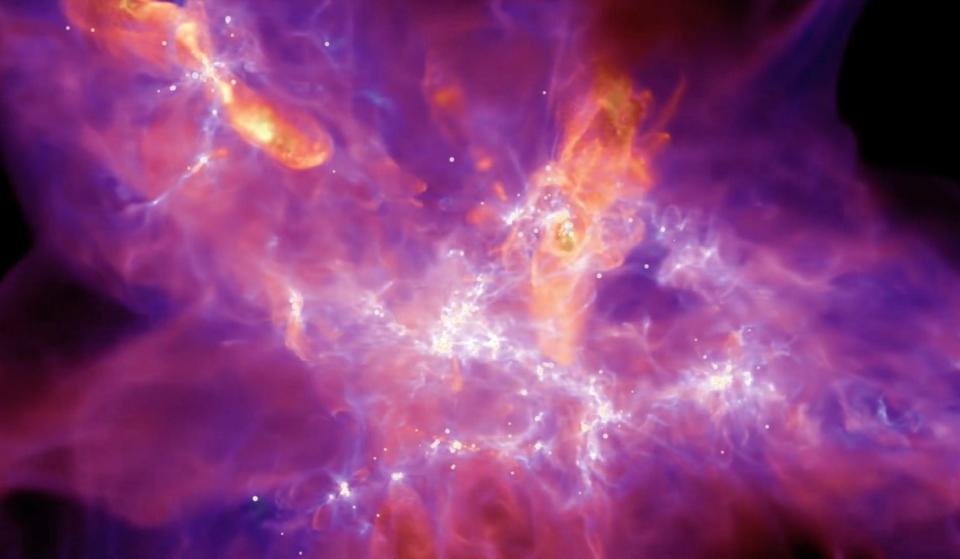Scientists build ‘Starforge’, world’s most realistic simulation of stars being born

Astrophysicists have developed an astonishingly realistic model of how stars form called the “Starforge”.
Starforge, which stands for Star Formation in Gaseous Environments, was developed by a team at Northwestern University – and they claim it is the highest-resolution 3D simulation of star formation that has ever been created.
This computational framework can simulate an entire gas cloud that is 100 times larger than what was previously possible, allowing scientists to model formation, evolution and dynamics while accounting for stellar feedback, including jets, radiation, wind and nearby supernovae activity.
Past simulations have been able to incorporate these types of feedback individually, but this simulation allows scientists to see how they might interact with each other to explore some of the deepest mysteries in the universe: why star formation is so slow and inefficient, what determines a star’s mass, and what causes them to cluster.
“How stars form is very much a central question in astrophysics,” said Northwestern’s Claude-André Faucher-Giguère. “It’s been a very challenging question to explore because of the range of physical processes involved. This new simulation will help us directly address fundamental questions we could not definitively answer before.”
Star formation can take tens of millions of years to happen, and although scientists are observing the night sky constantly, they are only seeing part of the process at any time.
“People have been simulating star formation for a couple decades now, but Starforge is a quantum leap in technology,” said Northwestern’s Michael GrudiÄ, who helped lead the work.
“Other models have only been able to simulate a tiny patch of the cloud where stars form — not the entire cloud in high resolution. Without seeing the big picture, we miss a lot of factors that might influence the star’s outcome.
“When we observe stars forming in any given region, all we see are star formation sites frozen in time. Stars also form in clouds of dust, so they are mostly hidden.”
The model is so massive that it takes a huge amount of time to run, sometimes taking three months to run a single simulation one of the largest supercomputers in the world operated by the Texas Advanced Computing Centre.
The resulting simulation shows a mass of gas — with a mass ten to millions of times greater than that of the sun — floating in the galaxy. As the gas evolves, it forms structures that eventually collapse and break away into individual stars. Those stars launch jets of gas outward from both poles, piercing through the surrounding cloud, ending only when there is no more gas left to produce stars.
It has already been used to confirm a suspicion scientists had about star formation: that jets of gas are necessary to disrupt the inflow of gas.
“They essentially blow away gas that would have ended up in the star and increased its mass”, GrudiÄ said, “people have suspected this might be happening, but by simulating the entire system, we have a robust understanding of how it works.”
The scientists say that by understanding star formation better, they can get a deeper knowledge of galaxy formation and, from that, the understanding of what the universe is made of and how it came to be formed.
The study, “Starforge: Toward a comprehensive numerical mode of star cluster formation and feedback,” was accepted for publication in the journal Monthly Notices of the Royal Astronomical Society.
Read More
Elon Musk says Tesla not selling bitcoin despite huge crypto crash
Crypto price – live: Bitcoin, ethereum and dogecoin suffer huge losses after China announcement
Coindesk and CoinMarketCap cryptocurrency trackers crash as Bitcoin, Ethereum, and Dogecoin collapse

 Yahoo Finance
Yahoo Finance 